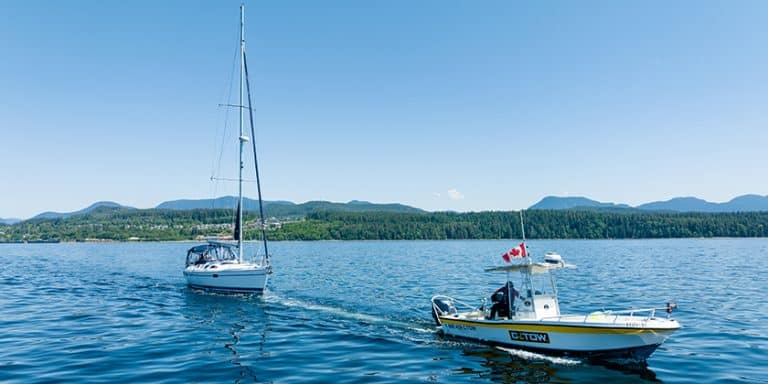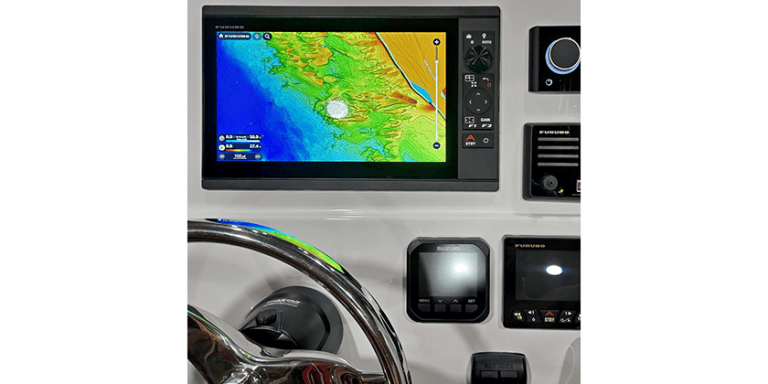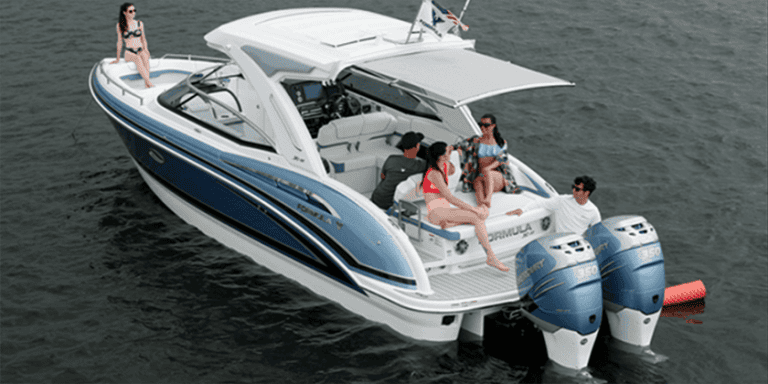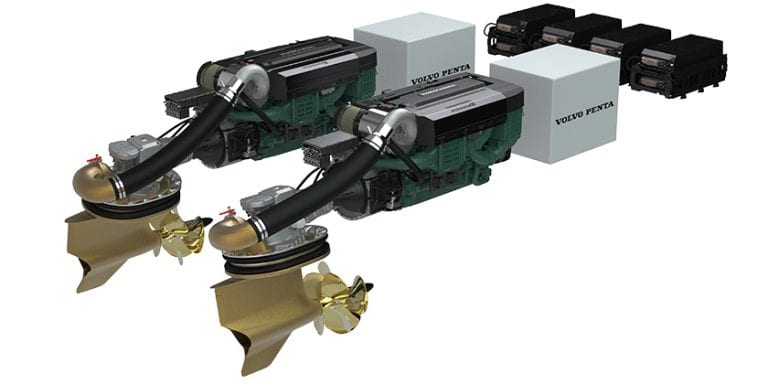Spring Commissioning
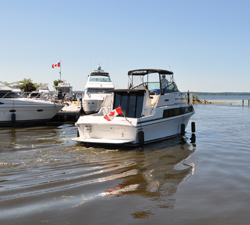
By Andy Adams
An Ounce of Prevention…
Can we safely assume that your boat was properly (and maybe professionally) winterized last year before you stopped using it?
Hmmm…
Even if you are on salt water and your boat can safely stay in the water year-round, are you using it regularly? Metal fittings are corroding all the time, the sun beats down on fibreglass and woodwork, and the rain and damp air all contribute to the slow but inexorable process of deterioration. When engines are used, oil and other lubricants are warmed up, spread around and parts are kept running freely. Air circulates through the interior when you are out and moving. Boats just like to be used more than they like being stored.
Before you start using your boat this summer, we wanted to share this checklist for spring commissioning that gives you a way to check off the important points before you cast off for another great season. We admire those readers who do the  job themselves, but we also believe that paying the pros is a great investment in safety and in maintaining your boat’s value.
job themselves, but we also believe that paying the pros is a great investment in safety and in maintaining your boat’s value.
A caution though: every boat is different and your boat may need service attention that this list does not cover. That is why having an experienced pro doing the work is a good idea.
This year, we went to True North Yachts in Port Credit, Ontario where we met with After Sales Service Manager Mark Goodyear and Senior Service Technician Paul Whealy who collectively have years of yacht service experience. They shared some of their most valuable spring commissioning tips with us, and we’ve added some of our own ideas and recommendations.
Last Season
Sail or power, almost every boat has an engine and any operating engine, especially a diesel engine, produces harmful contaminants that are flushed into the pan and held in suspension by the oil. If that contaminated oil is left over the winter  months, it can attack sensitive engine surfaces, so we hope you changed the engine oil and filter at the end of last season. The transmission and sail drive or stern drive unit also need annual oil and gear lube changes.
months, it can attack sensitive engine surfaces, so we hope you changed the engine oil and filter at the end of last season. The transmission and sail drive or stern drive unit also need annual oil and gear lube changes.
We further assume that you stored your fuel tanks full and with the correct amount of fuel stabilizer for gasoline, or biocide to prevent algae growth in diesel fuel, and that you ran the engines long enough that the treated fuel has circulated through the fuel system before storage.
Treat a generator like the engine it is. Hopefully, you stored it correctly last year. In the spring, start it up, put it under load, make sure it shifts properly before you go out and run it up to full operating temperature.
These steps are crucial whether you haul your boat for the winter or keep it in the water.
On the Hard
Many boats are stored on the hard and this is especially convenient for spring commissioning. The most visually obvious  thing is the bottom paint. Goodyear believes many boaters paint their bottoms too often for the Great Lakes. Paint build-up can become very thick, yet some anti-fouling paints release their copper content within three to four weeks.
thing is the bottom paint. Goodyear believes many boaters paint their bottoms too often for the Great Lakes. Paint build-up can become very thick, yet some anti-fouling paints release their copper content within three to four weeks.
Goodyear favours Micron CSC, a self-polishing, multi-season paint which is equally effective in fresh or salt water. Because it wears off over time with movement of the boat, it reduces paint build-up. And the boat may not need repainting each season, even if it is left in the water year-round. When you see the grey or white epoxy (or a contrasting colour of paint applied before your final coats) start to appear, your bottom paint is finally wearing off.
Anodes
Changing anodes and maintaining corrosion protection is critical. Goodyear recommends you change your anodes every year. Watch for signs of electrolysis resulting from stray current entering the water through a shore power system issue or more likely, from a boat that has a faulty ground. Sail and stern drives can literally be eaten away when their protective anodes become corroded.
 To prevent electrolysis, Goodyear and Whealy recommend the use of magnesium anodes in fresh water, aluminum in brackish water, and zinc in salt water.
To prevent electrolysis, Goodyear and Whealy recommend the use of magnesium anodes in fresh water, aluminum in brackish water, and zinc in salt water.
Isolation transformers are being installed on more and more new yachts, following the standards established by the ABYC, but boats without an isolation transformer can accidentally put stray current into the water, eating anodes away in just days and causing dramatic damage to underwater metals.
When you’re inspecting the bottom of the boat, be sure to check the anodes on your sail or stern drive, bow and stern thrusters, shafts, props and every other place an anode is installed.
Thru-Hull Fittings
Goodyear says it’s True North’s policy to leave thru-hull fittings open all winter and when they launch.
An important point is how you handle your transducer over the winter. Some transducers have plastic construction that could hold water, freeze and crack or break during the winter. Goodyear believes it’s best to remove the transducer in the  fall to drain the water, then lubricate the “O” rings and reinstall so you’re ready for spring.
fall to drain the water, then lubricate the “O” rings and reinstall so you’re ready for spring.
Before launching, True North’s pros lift floorboards and open all access points to locate every thru-hull on the boat. It’s amazing how many holes you may find have been drilled in the bottom of your boat to install equipment, hoses and connections. We looked at one older sailboat in the 30-foot range that had a dozen thru-hulls!
Through the winter, even a dip in a hose one can create a problem if it doesn’t drain fully and the freeze-thaw cycle creates a leak. That’s why Goodyear’s crew conducts a thorough search for leaks after the initial launch. It’s a great idea to keep the boat in the slings or on the trailer until you’re sure no water is entering.
Fuel Systems and Filters
For boats with gasoline engines, ethanol has become major issue. The addition of this form of alcohol into gasoline has not been a problem in automobiles because their fuel systems are sealed and typically drivers use up their gasoline quickly.
 In boats, fuel systems are vented to the open air; as a result, moisture and condensation can enter tanks. Ethanol is hygroscopic and will absorb water. This eventually reaches the point where phase separation occurs and a blob of material that the engine cannot combust will block the fuel system.
In boats, fuel systems are vented to the open air; as a result, moisture and condensation can enter tanks. Ethanol is hygroscopic and will absorb water. This eventually reaches the point where phase separation occurs and a blob of material that the engine cannot combust will block the fuel system.
Diesel fuel with water contamination can develop bacterial growth that leads to deposits which can clog filters and fuel systems. (For an overview of diesel fuel filtration, see Engine Room, page 76).
Careful attention to fuel filters is the key to combating these problems. Replacing filters at the start of each season is a good practice; discuss with your service technicians how best to maintain the quality of your fuel systems and filters.
Drive Systems
Drive systems require special attention in the spring to ensure a trouble-free season. The starting point is the raw water pump impeller that delivers cooling water to the engine. If a thru-hull is left closed, sea weed or animal debris has blocked  the intake, or the impeller is worn or damaged, the engine can overheat and potentially catch fire. Two years ago, this happened to a cruiser on Lake Simcoe on its first run of the season, and the boat burned to the waterline.
the intake, or the impeller is worn or damaged, the engine can overheat and potentially catch fire. Two years ago, this happened to a cruiser on Lake Simcoe on its first run of the season, and the boat burned to the waterline.
For boats equipped with outboard engines or stern drive systems, the water intake is on the lower unit and the pump impeller is sometimes in the drive, sometimes on the engine. Either way, the impeller itself is an inexpensive part and annual replacement is a cheap assurance of reliable engine cooling water.
Stern drives require a separate maintenance program because the engine is inside the boat and the drive is outside, requiring that water intakes, drive shaft, control cables, and other assemblies pass through the transom and out to the drive, which has to both turn for steering and tilt up and down for trim and trailering. This mobility is accomplished through the use of water-tight transom bellows. Corrugated rubber bellows have a lifespan of three to six years. The rubber eventually becomes hard and brittle and leaks or total failure can result.
 Another component that requires attention is the universal joint. The universal joint includes a gimbal bearing that requires annual lubrication prior to launch.
Another component that requires attention is the universal joint. The universal joint includes a gimbal bearing that requires annual lubrication prior to launch.
Manufacturers’ maintenance schedules typically recommend that the stern drive be removed from the boat on an annual basis or every 100 hours of use. At that time, the technician can inspect the condition of universal joints, gimbal bearing, bellows and so on. Because of the weight of the drive itself, this is not a task most owners can tackle themselves.
Additionally, sometimes stern drive boats are stored with the drive removed. Sail drives also require proper lubrication but they do not have the bellows and moving parts found in a stern drive.
For inboard installations of various types, check that the stuffing box is operating and adjusted correctly. New dripless versions in particular, need attention to ensure that cooling/lubrication water is reaching the bearing surface. If the boat has been stored out of the water or hauled for maintenance, follow the manufacturer’s recommendations carefully for any  pre- or post-launch steps to prevent leaks.
pre- or post-launch steps to prevent leaks.
Traditional stuffing boxes with a packing gland and flax packing should never drip more than one to three times a minute when running in gear and should keep the bilge almost dry when not running. Periodically, the packing nut needs adjusting; if the gland leaks too much, packing needs to be replaced. Also, pay attention to the condition of the hose surrounding the stuffing box and replace it if it is worn.
Goodyear emphasizes the importance of keeping the bilge as clean as possible. Then, if you suddenly see oil, green coolant or other liquids under the engine, stop immediately and investigate.
Batteries and Power
There are many ways of storing batteries in winter, but if a series of batteries is left connected and one has a bad cell, it can affect the other batteries. In the yacht that we photographed, the cables were removed, eliminating any risk of current drain during storage.
 When batteries are reconnected in the spring, Goodyear recommends testing them with a voltmeter in case the dashboard gauge is not accurate. After storage, if the battery registers 12.7 volts, in general, you have a healthy battery. If you only have 11.7 volts, the battery is significantly weakened. It’s wise to check them before storage and again in the spring to compare. If you load-test batteries in the fall, you can arrange for replacements over the winter, if necessary.
When batteries are reconnected in the spring, Goodyear recommends testing them with a voltmeter in case the dashboard gauge is not accurate. After storage, if the battery registers 12.7 volts, in general, you have a healthy battery. If you only have 11.7 volts, the battery is significantly weakened. It’s wise to check them before storage and again in the spring to compare. If you load-test batteries in the fall, you can arrange for replacements over the winter, if necessary.
Another hot tip (literally) is that when you connect a battery charger, come back in a while and check voltages and the temperature of the battery by touching it. If it is hot and the voltages don’t seem right, the battery is likely faulty and needs to be replaced.
When you buy batteries, reputable or premium brands are well worth the investment.
Sailboat Rigging
Goodyear recommends checking all fittings, turnbuckles, cotter pins, stays and chain plates for cracking, corrosion or signs of fatigue before stepping the mast.
While Goodyear believes the best way to store a boat is indoors with the mast down, this is not always possible. Leaving the mast up reduces haulout and relaunch time in the spring and fall but increases long-term wear on the hull and components.
Leaving the rig down also allows easy regular inspection of mast, rigging, lights and other mast-mounted electrics. Check the radar mount. Inspect halyards and other running rigging for wear and chafe points.
When boats are left in salt water year-round, it’s important to carry out seasonal inspections of the mast and rig, either by going aloft yourself or paying a rigger to do it for you.
Plumbing Systems
The lowly bilge pump deserves top-level attention. Test float switches and alarms – these boat and life-saving devices are inexpensive and deserve to be replaced occasionally to ensure top performance.
When Whealy commissions a boat, he fills the water tanks, pressurizes the water system and leaves the water pump switched on. While working on other areas of the boat, he listens for the pump cycling and occasionally checks the bilge for leaks. Sealing O-rings and gaskets can deteriorate and should be replaced at regular intervals.
When it comes to heads, Mark comments that you get what you pay for. The higher the quality, the better the head is likely to function and the more reliable it will probably be. The top-quality products are all very good in his opinion, prevent odors from getting into the boat and are well worth the additional investment.
Fill and empty the head three times, check for leaks on the seawater intake and on the sewage outlet. Make sure there’s no backflow of sewage and check for smooth, normal operation. Don’t forget to try out the shower and check for leaks there as well.
Galley
Check the propane tank locker and its overboard drain. Flush the drain to ensure that the hose is intact and not clogged. Never let propane drain into the bilge.
Refrigerators and ice makers sometimes have a water line. Make sure it’s not leaking once the appliance is turned on.
Air-conditioning on boats uses raw water for cooling and heating; at the start of the season, it can be hard to prime the pump. Some units have wing nuts to enable priming of the AC line; loosen the fitting until water escapes, then tighten it again and the system should be primed. Check the overboard discharge to ensure there is a stream of cooling water.
Safety Equipment
Before launching, make sure all safety equipment is on board and up to date: flares, life jackets, fire extinguishers and so on. Do a vessel safety check. It’s not just the police who do safety checks. Goodyear recommends that you do your own safety check a day or so after launching to ensure a problem hasn’t developed since it went into the water. When you cast off for the first time, make sure you bring in all of the lines, including the shore power cord!
Many readers keep their boats at yacht clubs. Goodyear makes an interesting point about club launch weekends; these often involve time constraints or bad weather. When working with heavy boats and big equipment, professionals never push. Everyone involved in haulout and launch needs to remember to slow down and keep in mind the safety of people and boats.
The best time to start an enjoyable boating season is at spring launch!
Tips from the Pros
• When owners are getting their boats ready for launch, they may feel pressured and stressed. It can really help to have a checklist to follow. Keep a laminated list on board at all times and update it from season to season as necessary.
• Goodyear recommends having an anchor and plenty of rode ready to deploy in case the engine quits between the launch well and your slip. Setting the anchor will keep you safe until help arrives.
• In the hours after launch, and a day or so later, be sure to check for leaks or any other issues that may have developed since the boat hit the water.
• Even if you are a committed and knowledgeable do-it-yourselfer, occasional help from professionals with key steps in commissioning can ensure all is done right and offer an excellent opportunity to learn by watching. Many professional techs are happy to pass along their knowledge to interested owners.
Remember that ounce of prevention! Here’s wishing you a safe and trouble-free summer in 2013.
Photo Captions:
Photo 1 – Heading out with all systems go!
Photo 2 – New or old, every boat needs attention before spring launch.
Photo 3 – First, make sure everything is off at the panel. Use a meter to test the battery next then make sure all the connections are clean and tight and that the batteries are secured.
Photo 4 – The blue lines are the water manifolds from the water tanks while the black box is the generator muffler. Also, you see the emergency high water bilge pump and alarm as well as the main pump mounted lower. Check the switches and alarms on all.
Photo 5 – This feathering prop has to be greased before the boat is launched. You can see the dark (or wet) areas have been greased. The anodes here could be replaced.
Photo 6 – Water from the exhaust manifold cooling jacket also lubricates the the drive shaft stuffing box, so make sure it’s not leaking when you run the engine up to temperature and check to make sure it’s not getting hot.
Photo 7 – The first commissioning of a new boat is a special time for care!
Photo 8 – This line leading to the through-hull valve is from the galley sink
Photo 9 – This is the through-hull for the triducer. When replacing it, lubricate the O-ring with grease to prevent leaks. Make sure that the arrow is pointing in the right direction. If it’s an older one with the cut out, it has to be positioned correctly or it will leak.
Photo 10 – Ensure that the raw water strainers are clean, clear and that the caps are put on securely to prevent vacuum or water leaks.
Photo 11 – The pros get ready to launch a big keel boat from the travel lift.

